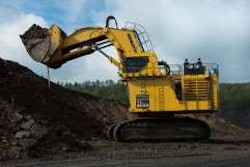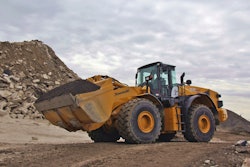
What’s more, many of the electorate (and fiscally conservative politicians) view any government funded construction as nothing more than pork with the underlying purpose to gather votes rather than an as entity that fuels commerce and provides punch to the economy. Sure, there is some pork in the recipe. After all, it’s the meat of compromise when cooking legislative stew. However, make-work projects are a relative few compared to the hundreds that are needed to keep the country on the path to economic progress.
What seems to be forgotten is that every taxpayer provides funding for public construction, whether they like it or not. Lest we forget that motorists pay 18.5 cents in federal tax per gallon of gas, which funds the nation’s 4 million miles of highways and bridges. In some states, drivers pay as much as 45 to 50 cents per gallon, including county, state and local taxes per gallon. This money is pegged for the Highway Trust Fund for the building of highways, bridges and other transportation projects.
However, often times these dedicated funds are diverted for such things as balancing budgets, funding pension programs or for social programs.
Note #1 regarding infrastructure funding: the 2012 Bridge Inventory report, as survey about the condition of bridges under the jurisdiction of each U.S. Department of Transportation, published by Better Roads magazine in its Nov. 2012 issue, shows that of the nation’s 602,000 bridges more than 135,000, 22.5 percent, are classified as “structurally deficient,” or “functionally obsolete.”
Note #2 regarding infrastructure spending: Since the industrial revolution, the United States has relied on a strong infrastructure to support economic growth. According to the World Economic Forum report on global competitiveness, the U.S. places 14th in overall infrastructure behind Luxemburg, Netherlands, Canada, Qatar and others. That’s up from 5th place in the early 2000s.
In addition, the American Society of Civil Engineers reports that the country has a backlog of construction repairs of $2 trillion! They say these repairs need to be done over the next five years in order to stay competitive.
Note #3 regarding infrastructure spending: The construction industry is reminded that the countdown to the expiration of current highway funding has already begun as that law (Moving Ahead for Progress in the 21st Century, or MAP-21) expires Sept. 30, 2014 just in time for the Nov. 2014 mid-term election.
So what are the 113thCongress and the Senate going to do about infrastructure repair?
Typically in the days immediately following an election there are pleas by both parties for bipartisan politics and the “spirit of cooperation.” That’s been much easier said than done in recent years.
With Republicans maintaining control of the House, Democrats keeping the Senate and the President re-elected, the National Stone, Sand & Gravel Association (NSSGA), a leading proponent of infrastructure investment, said on Nov. 7: “Presidential election years are always a tricky time for anyone looking to get anything done in Washington; neither party has much incentive to cooperate, and for the minority party, the prospect of controlling the White House come January acts as a powerful incentive to do nothing. But this year has been significantly worse. With Republicans in control of the House, Democrats of the Senate, and partisanship at an all-time high, the atmosphere has been toxic even on good days – and the election has only made it uglier. With yesterday’s results, it is difficult to see any significant changes coming.”
With the predicted “fiscal cliff” on the horizon, when, on Jan. 2, 2013 a $600 billion combination of rising tax rates and expiring preferential tax policies comes into play, it’s more unlikely than ever that Republicans will vote to fund infrastructure projects. At the same time, without a major election in the near-term, Senate Democrats have little incentive to push for a construction bill even under the auspices creating jobs.
As one Washington “industry insider” said on the day after the election when asked about the prospects of near-term federal funding of infrastructure projects, “We’re gonna get slapped in the face either way. Just a question of how much! Does that sound cynical enough?”
Mike Porcaro is with Randall Reilly Construction Media, of which Aggregates Manager, Better Roads and Equipment Manager are a part, and a long-time veteran of the construction industry.
President Barack Obama and Gov. Mitt Romney













